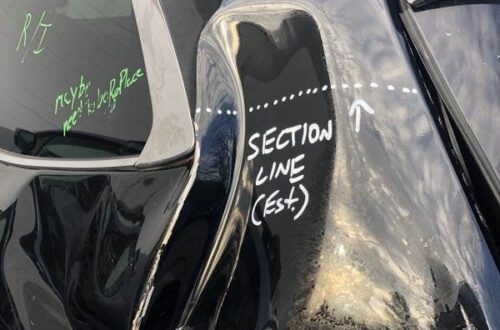
Repair Documentation Series, Part 2: Assignment of Proceeds and Writ of Replevin
Published August 22, 2014 in Autobody News
Repair documentation plays an important role in your collision repair business, but many shop owners are not very familiar with what they need to protect their interests, so I’ve turned to an industry-leading attorney to provide crucial information on what you need to know about documentation in the collision repair industry. Last month, Erica Eversman, Chief Counsel for Vehicle Information Services, Inc. and founder of the Automotive Education and Policy Institute, a non-profit organization geared toward educating consumers, explained how collision repair facilities can use the Authorization to Repair and Repair Contract to receive proper compensation from insurers in legal battles. While those two documents are extremely important, they may not be the only documents you need to successfully pursue a shortpay case in a courtroom. Here, Eversman explains the relevance of an Assignment of Proceeds and Writ of Replevin in these situations.
The purpose of the Assignment of Proceeds is to create a bridge between the insurance company and the collision repair shop, and this is especially important when you have a consumer who is unwilling or unable to pursue proper compensation via a shortpay lawsuit on the shop’s behalf. Though the insurance company owes their customer the duty of indemnity and the customer thus expects their insurer to pay the shop that repairs their vehicle, many consumers simply do not know or care enough to pursue litigation in instances of shortpays. By asking your customers to sign an Assignment of Proceeds, your shop creates a necessary bridge to the insurance company, giving you the right to step into the consumer’s shoes (for purposes of collecting the full repair costs), force the issue and get paid.
The “devil is in the details”, so your first step is going to be hiring an attorney with experience in the collision repair industry who can assist you with properly wording the document. Eversman cautions, “you don’t have the right to sue on the consumer’s behalf for everything, such as diminished value; because you’re only being assigned the rights to proceeds, you can only sue the insurance company to collect proceeds for the repair. You need to understand what this industry is about, clarify exactly what’s going on, and specify which rights are being assigned to you.”
Though a Power of Attorney (POA) would also serve this purpose, customers are less likely to agree to sign this type of document. The problem with the POA is that, while it gives a repairer more power, it is also more complicated, leaving the repair facility with the burden of making all decisions for the customers, so Eversman discourages the use of the POA. While every insurer has an anti-assignment clause written into their policies, most states permit the use of post-loss agreements, making the Assignment of Proceeds a viable option. It also makes sense for the shop to assume responsibility for prosecuting the insurance company, if necessary, since it requires less action on the part of the consumer.
Once you get to the point of pursuing litigation in order to receive proper compensation, you must remember that the burden of proof falls on you, the plaintiff. In court, you should try to avoid allowing the insurance company to present their estimate as evidence because part of your battle entails proving that their estimate is meaningless – as the collision repair professional, YOU are the one with the right to determine how the vehicle should be repaired, while the insurer is merely obligated to pay for the repair, not to control the process (unless the insurance company has elected to repair).
In order for an Assignment of Proceeds to be legitimate, it is imperative that the consumer understand what they are signing, so it is also a good idea to ask your customers to sign a separate document confirming their comprehension of the Assignment of Proceeds. When constructing your Assignment of Proceeds, begin by defining what it is and how it will be used. The purpose of the document is to allow “a transfer of property or other rights from one person (the assignor) to another person (the assignee) which confers a complete and present right in the subject matter to the assignor… Essentially, this means that the assignee stands in the shoes of the assignor,” Eversman explains.
Because the assignment serves as a contract between the assignor and the assignee, it is thus subject to contract law and interpretation. An important item that must be included in Assignments of Proceeds is a definition of the assignable rights which will identify causes of action issuing from a wrong that causes injury to property or from tort by which property is diminished or damaged; both of these are generally assignable. It is also vital to inform your customers that they can assign their right to recover damages to their property without conveying the title to that property.
For an Assignment of Proceeds to be valid, it must contain clear evidence of the intent to transfer rights in addition to a description of the subject matter in question. The assignment must be clear and unequivocal and be noticed to the obligor. While there are no formal requirements regarding the verbiage used in this document, the language must clearly indicate the owner’s intention to transfer the claim.
Valuable consideration is essential to support the assignment, and while the word “consideration” doesn’t necessarily have to appear on the document, Eversman recommends it as evidence of the exchange required to make an Assignment of Proceeds valid. Essentially, this allows you to take possession of the vehicle without receiving payment if the document is signed, but you are also agreeing not to sue the consumer for money owed as part of the assignment.
In your supporting documents, you should also include an Assignment for Money Due which must identify the customer, the repair facility, the vehicle and the loss. As long as this is without defects, it should be enforceable without being notarized (dependent upon state laws).
The Writ of Replevin is a document that the insurance company typically uses to retrieve a total loss vehicle, filing it to say a shop is unlawfully withholding a vehicle when they do not want to pay for the repair. Because this document is only valid if the insurance company can prove the shop is wrongfully withholding the vehicle, it is imperative that you are prepared to defend yourself against a Writ of Replevin by including a clause in the Repair Contract that states the consumer cannot transfer the title of the vehicle without ensuring the repair bill is paid in full. With the vehicle owner’s signature affixed to this verbiage, the insurance company has no right to the vehicle until they have paid for the repair, making their Writ of Replevin effectively useless.
So, with the Authorization to Repair, Repair Contract, Assignment of Proceeds and defense against the Writ of Replevin, you are well on your way to protecting your business interests, but you’ll also need a Parts Notice and Authorization as well as an Indemnification Letter (we’ll cover these next month in the third and final installment of this series). You can still get started right away by contacting a local attorney to start drafting these important documents which will allow you to recover proper compensation on every repair that comes through your shop doors.




